New York City is a city of water, and for centuries, some of the world’s greatest artists and sculptors have represented our heritage with astonishing fountains. Here are just a few of our favorite fountains found in our parks; from ornate works that have stood for centuries to modern marvels of artistry and engineering.
The Bethesda Fountain is one of the largest fountains in New York City and Central Park’s most iconic fountain. Many visitors head north from The Mall to see the fountain at Bethesda Terrace—Olmsted and Vaux’s vision of a reception area for park. The fountain, dedicated in 1873, commemorates the 1842 opening of the Croton Aqueduct, New York City’s first water supply system which brought fresh water following the city’s bout with cholera.
On the Fourth of July, 1842, New York City celebrated the opening of the Croton Aqueduct with a fountain display in City Hall Park. It was built using water pumped in from the aqueduct and had a center jet that could shoot water as high as 50 feet in the air. In 1871, the Croton Fountain was replaced by the park’s current fountain, the Mould Fountain, designed by Jacob Wrey Mould (who also co-designed the Bethesda Fountain).
Many visitors and New Yorkers hang out around this well-known fountain at the heart of the park. The park’s original fountain was replaced by a fountain from a south entrance in Central Park, around the mid-1870s. It was designed by Jacob Wrey Mould, who also designed the City Hall Park Fountain and co-designed the Bethesda Fountain in Central Park. In 2009, the fountain was conserved and moved ten feet to align with the majestic Washington Square Arch. More information about Washington Square Park.
The Unisphere, Queens’ most iconic symbol, was commissioned for the 1964-65 World’s Fair—the second World’s Fair in Flushing Meadows Corona Park. It was the center theme of the fair’s space age and “Peace through Understanding” themes. The globe was designed by Gilmore D. Clarke who, with his partner Michael Rapuano, was responsible for the design of Riverside, Battery, Bryant, Marine, and Astoria Parks, as well as Orchard Beach and the site plan for the 1939-40 World’s Fair at Flushing Meadows Corona Park. Plans to have the Unisphere rotate for the Fair were shelved as too costly, and lights and fountain water jets were used instead to create an illusion of movement. The globe is 140 feet tall with a 120-foot wide diameter, and weighs 350 tons.
It’s not unusual to see wedding parties pose for photos here at this fountain on the outskirts of Prospect Park. Visitors of all ages gather around the magnificent fountain to see the water jet over the bronze male and female figures, representing Wisdom and Felicity. The two figures are surrounded by Neptune (the Roman god of the sea), his attendant Triton, and a boy holding a cornucopia. The fountain is named for Brooklyn-based philanthropist Frank Bailey (1865-1953) and his wife. Frank Bailey was the chairman of the Brooklyn Botanic Garden, a founder and trustee of the Museum of the City of New York, and a trustee of the Brooklyn Institute of Arts and Sciences.
The Bethesda Fountain is one of the largest fountains in New York City and Central Park’s most iconic fountain. Many visitors head north from The Mall to see the fountain at Bethesda Terrace—Olmsted and Vaux’s vision of a reception area for park. The fountain, dedicated in 1873, commemorates the 1842 opening of the Croton Aqueduct, New York City’s first water supply system which brought fresh water following the city’s bout with cholera.
On the Fourth of July, 1842, New York City celebrated the opening of the Croton Aqueduct with a fountain display in City Hall Park. It was built using water pumped in from the aqueduct and had a center jet that could shoot water as high as 50 feet in the air. In 1871, the Croton Fountain was replaced by the park’s current fountain, the Mould Fountain, designed by Jacob Wrey Mould (who also co-designed the Bethesda Fountain).
Many visitors and New Yorkers hang out around this well-known fountain at the heart of the park. The park’s original fountain was replaced by a fountain from a south entrance in Central Park, around the mid-1870s. It was designed by Jacob Wrey Mould, who also designed the City Hall Park Fountain and co-designed the Bethesda Fountain in Central Park. In 2009, the fountain was conserved and moved ten feet to align with the majestic Washington Square Arch. More information about Washington Square Park.
The Unisphere, Queens’ most iconic symbol, was commissioned for the 1964-65 World’s Fair—the second World’s Fair in Flushing Meadows Corona Park. It was the center theme of the fair’s space age and “Peace through Understanding” themes. The globe was designed by Gilmore D. Clarke who, with his partner Michael Rapuano, was responsible for the design of Riverside, Battery, Bryant, Marine, and Astoria Parks, as well as Orchard Beach and the site plan for the 1939-40 World’s Fair at Flushing Meadows Corona Park. Plans to have the Unisphere rotate for the Fair were shelved as too costly, and lights and fountain water jets were used instead to create an illusion of movement. The globe is 140 feet tall with a 120-foot wide diameter, and weighs 350 tons.
It’s not unusual to see wedding parties pose for photos here at this fountain on the outskirts of Prospect Park. Visitors of all ages gather around the magnificent fountain to see the water jet over the bronze male and female figures, representing Wisdom and Felicity. The two figures are surrounded by Neptune (the Roman god of the sea), his attendant Triton, and a boy holding a cornucopia. The fountain is named for Brooklyn-based philanthropist Frank Bailey (1865-1953) and his wife. Frank Bailey was the chairman of the Brooklyn Botanic Garden, a founder and trustee of the Museum of the City of New York, and a trustee of the Brooklyn Institute of Arts and Sciences.
Two cherubic-like figures struggle with equine sea creatures in this 200-year-old fountain. In a basin below the battling creatures, a mermaid and merman flee. The fountain’s sculptor, Maine native Charles E. Tefft (1874-1951), was a student and professor at the then newly-opened Artist-Artisan Institute—established by John Ward Stimson, former Director of Art Education at the Metropolitan Museum of Art. Stimson created the school because he believed America lacked its own artistic beauty of manufactured arts and industrial decoration.
Even though the park is NYC’s first park, dating back to 1733, the fountain in the park today was added about two centuries later. There were two fountains here before but several reconstructions, including the construction of the IRT subway (now MTA) and preparations for the 1939 World’s Fair, forced new renovations to the park. In a 1976-1977 capital renovation, the park was restored to its 18th-century appearance, and publisher and philanthropist George Delacorte donated the park’s central fountain.
At Snug Harbor, Neptune, the Roman god of the sea, strides atop a scaly sea monster with his spear poised to strike. The 10-foot tall fountain is a 1994 replica of the original work, which was installed in the park in 1893. The replica was recast by the Modern Art Foundry in Queens using historic photographs and wax casts from the original zinc monument. How did the replica arrive in Staten Island? By the Staten Island Ferry, of course!
This beautiful fountain in the Bronx's Joyce Kilmer Park honors German poet Heinrich Heine (1797-1856), author of Die Lorelei—about a siren who lured sailors to their deaths on the Rhine. The sculptural group, carved out of white Tyrolean marble, depicts the Lorelei (siren) seated on a rock in the Rhine River among mermaids, dolphins, and seashells. The fountain was originally made for Heine’s home city Dusseldorf in 1888 but after the city declined the monument on aesthetic and political grounds, it was sold to a committee of German-Americans in 1893 and dedicated at what was then Grand Concourse Plaza on July 9, 1899.
At Snug Harbor, Neptune, the Roman god of the sea, strides atop a scaly sea monster with his spear poised to strike. The 10-foot tall fountain is a 1994 replica of the original work, which was installed in the park in 1893. The replica was recast by the Modern Art Foundry in Queens using historic photographs and wax casts from the original zinc monument. How did the replica arrive in Staten Island? By the Staten Island Ferry, of course!
This beautiful fountain in the Bronx's Joyce Kilmer Park honors German poet Heinrich Heine (1797-1856), author of Die Lorelei—about a siren who lured sailors to their deaths on the Rhine. The sculptural group, carved out of white Tyrolean marble, depicts the Lorelei (siren) seated on a rock in the Rhine River among mermaids, dolphins, and seashells. The fountain was originally made for Heine’s home city Dusseldorf in 1888 but after the city declined the monument on aesthetic and political grounds, it was sold to a committee of German-Americans in 1893 and dedicated at what was then Grand Concourse Plaza on July 9, 1899.
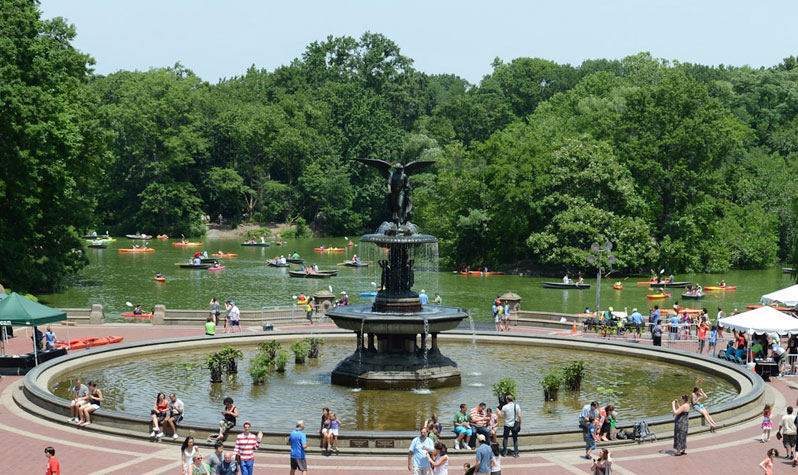

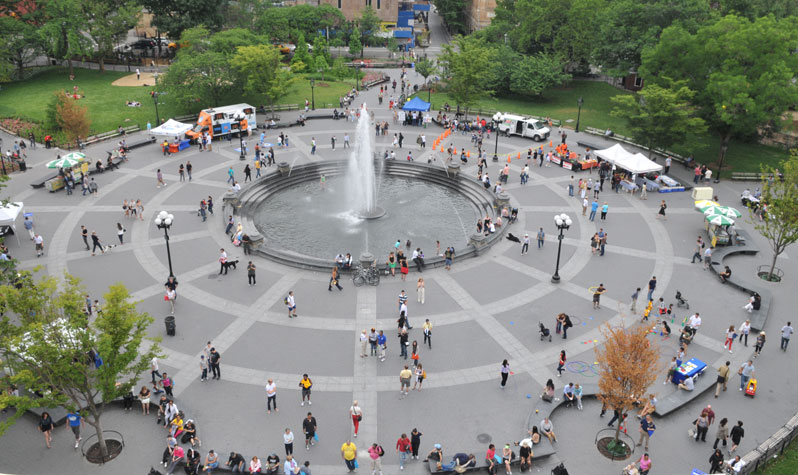
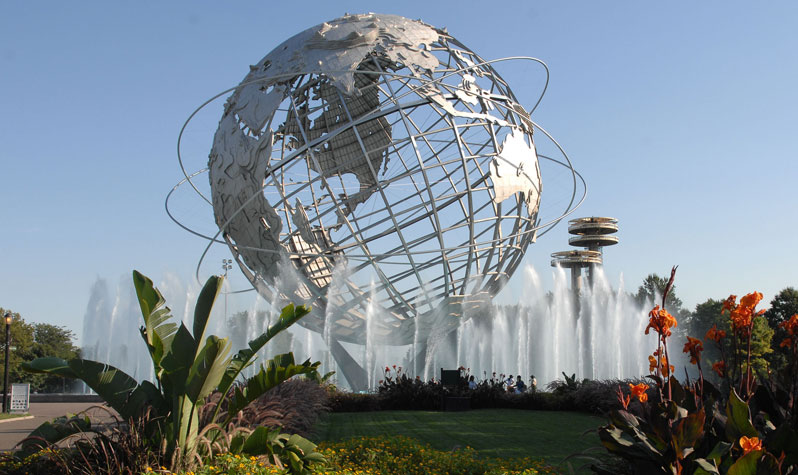
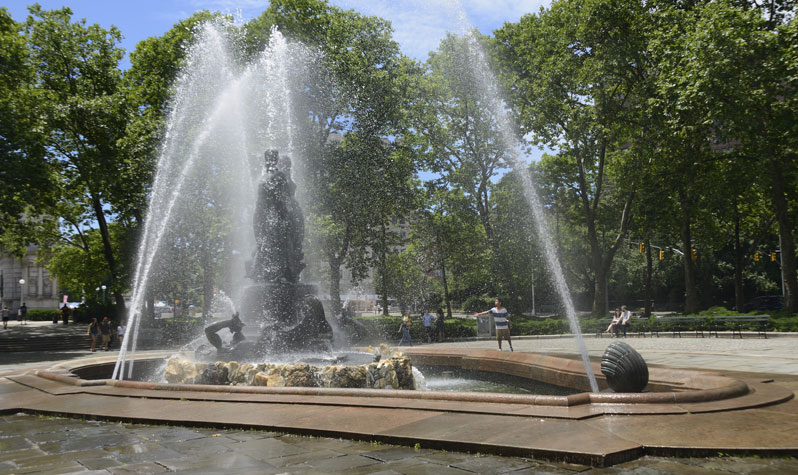
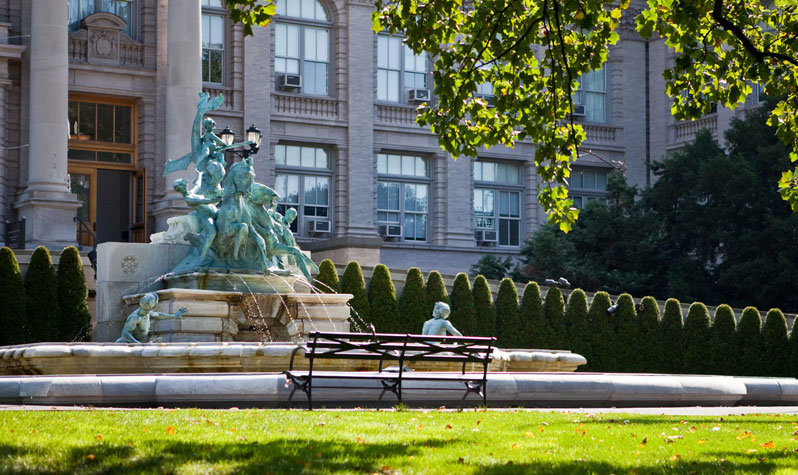
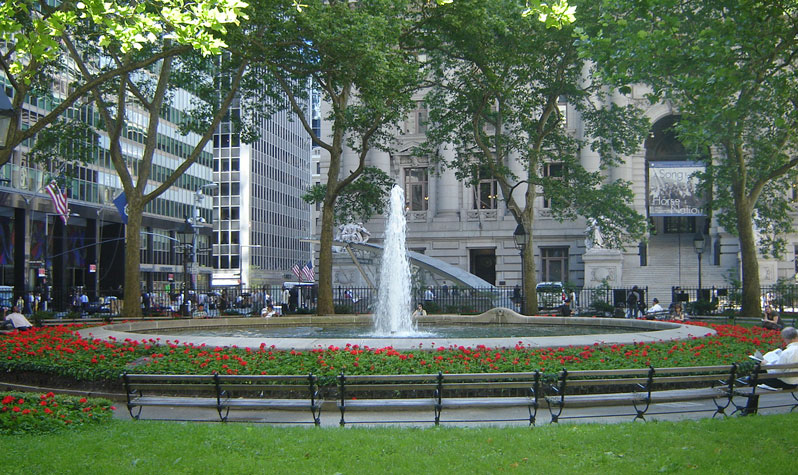
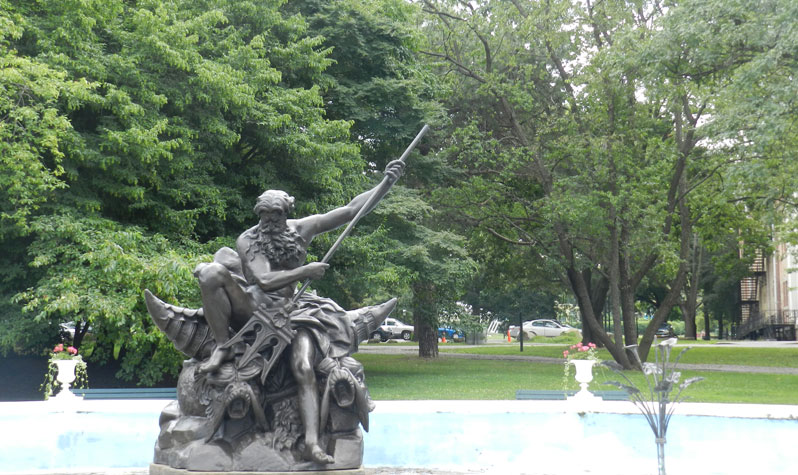
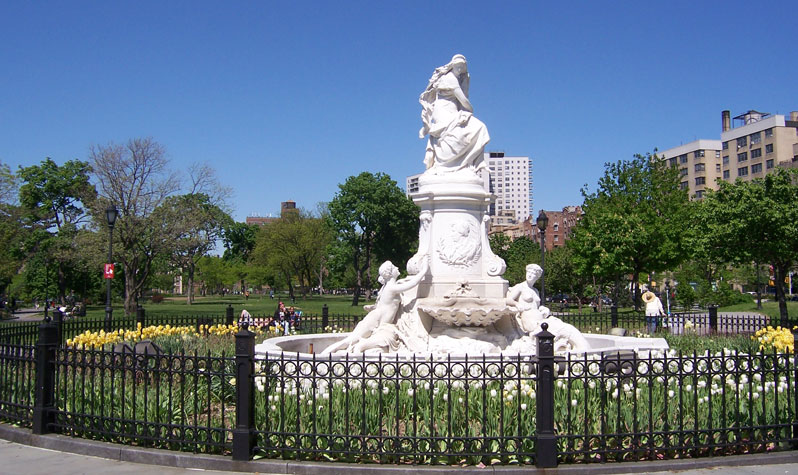
Comentarios
Publicar un comentario